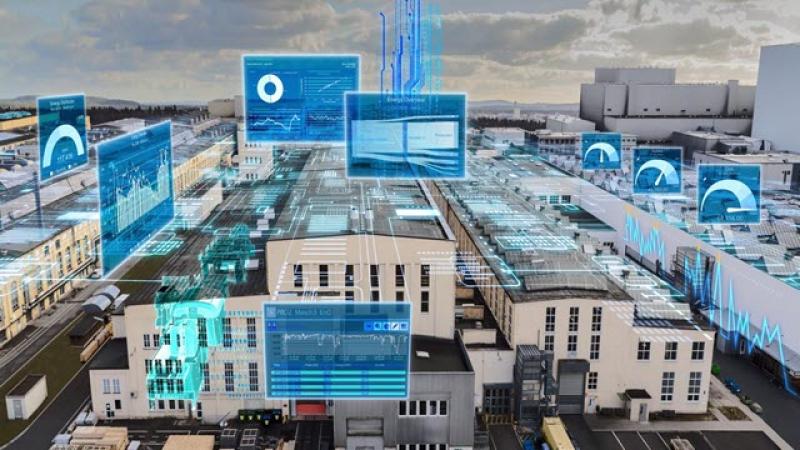It’s easy to understand the case for collecting and monitoring data from IoT and building systems to make buildings more efficient and conserve energy. But what tends to get lost in the conversation around sensors in commercial buildings is that IoT also benefits the people working there.

“IoT allows a building to evolve and self-upgrade over time by enabling the building to become dynamic based on real-time requirements,” said Reza Alaghehband, CEO of Envio Systems, a company that offers an IoT control system for buildings made possible through cloud-based technologies. Today’s power of web and connectivity (IoT) eliminates the need for expensive wiring and installation so that the price of the smart hardware is often no longer a variable when implementing an IoT network into existing systems. This modern BMS can simply be placed in a building without disrupting the current infrastructure and enhance operations, resulting in increased equipment lifetime and decreased maintenance.
The ACEEE (American Council for an Energy-Efficient Economy) with both the Alliance to Save Energy and the Business Council for Sustainable Energy recently released a report that shows impressive energy savings numbers. The report states that US efficiency investments have prevented a 60% increase in energy consumption and carbon emissions since 1980 while also being responsible for a 50% reduction in the US power sector since 2005.
However, the report goes on to say that existing technologies could close the gap between the US’s goals, and the Paris Agreement’s climate targets. The US is not currently on track to achieve these emissions reductions. By integrating IoT fully into HVAC systems, energy usage can be more accurately detected and can the US can meet its goals.
“Retrocommissioning always saves money, but there is so much data available via existing systems integrated into building operations that adding IoT can seem overwhelming when FM teams are already spread thin,” said Shannon Smith, CEO of PointGuard, a company that helps monitor and analyze building systems and sponsor of a recent Propmodo report, “How Technology Can Streamline the Retrocommissioning Process.”
Beyond the appeal of energy savings, HVAC systems powered by IoT ensure faster reaction times by FM teams and even preventative actions to ensure occupants are always comfortable. This focus on occupant comfort is one of the largest trends of 2019 and is not going anywhere. In fact, Sodexo, one of the top three largest Integrated Facilities Management providers in the world, recently spun out WX, a consulting studio that helps companies quantify and improve their workplace experience.
“We pursue the integration of facility management services and we are shifting from an FM delivery model to the design and delivery of workplace experience,” said Yannick Villar, CEO and co-founder of WX and SVP GlobalWorkplace Solutions & Analytics at Sodexo. “But real value only comes when you can turn that into practical ways to make human experiences better and impact organizational performance.”
One way large companies, such as Sodexo, are improving the human experience within buildings is through partnering with innovative startups that optimize IoT practices. Sodexo recently announced a partnership with Spaceti, a company that analyzes the utilization of space, air quality, and more to attain an efficient and comfortable environment.
Aakash Ravi, Spaceti’s Co-Founder and Chief Growth Officer explained the importance of the partnership, “In the future, a greater onus will be placed upon facilities management professionals, as workplace experience becomes a key tenet in employee attraction and retention. Couple this with the huge optimization potential as it relates to corporate real estate, and we have a combination of ingredients that will elevate the role of the FM professional as a key stakeholder when it comes to strategic real estate decisions on a portfolio-level.”
The roles of the FM team and the IT team are starting to blend, especially when it comes to occupant comfort and answering to stakeholders about the building’s value. Previously, both teams were forgotten until something went wrong (would you rather have your email password reset or noisy HVAC fan above your desk fixed first?), were underfunded and were forced to operate in a reactive manner. With IoT powered systems, a slight change in an asset’s operational pattern can alert to future failure and make the FM or IT staffer look like a hero to occupants and building stakeholders.
Building staff is becoming more youthful as the next generation moves into FM roles, a generation that prefers sensors and analyzing data to manual system walkthroughs. Alaghehband continued, “This simplified but optimal management approach and tool not only appeals to a new and younger technologically savvy workforce, but also makes training across generations so much easier.”
When IoT is part of the equation, it benefits all building stakeholders and the automated, continual monitoring offers upgrade opportunities that were before too big of a task. “Traditional building management systems require costly upgrades most often to entirely new systems that need to be re-learned, IoT allows buildings to evolve and still be managed from the same interface,” said Alaghehband.
Buildings have always generated incredible data but IoT enables all building systems, especially those involved in HVAC, to communicate in real-time. IoT finally empowers FM teams to make modifications to assets before the point of “running to failure” or offices reach freezing cold temperatures. Given the appropriate tools to analyze building data from HVAC systems and IoT networks, FM teams can do more without working harder. With IoT doing 24/7/365 monitoring, FM teams can move towards facilities being a positive experience for occupants, leading to happy, comfortable people and impressed, money-saving building owners.